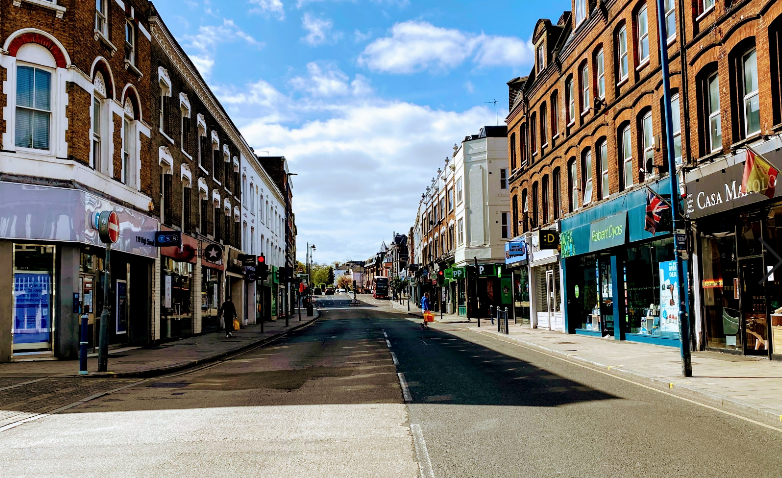The UK High Street was under considerable pressure to evolve, even before the pandemic started. We began to see retail parks taking customers away from the high street, customers wanting more choice, ease, and value for money, something which was easily provided by the online marketplace.
Business rates for retailers became unaffordable, the retail sector accounts for 5% GDP but pays 25% of the business rates bill. Along with restrictions on the use of buildings and how they are occupied, retailers were unable to evolve to meet the expectations of their customer base.
Then in March 2020, we were suddenly propelled into home working because of COVID-19. The mandatory closure of all non-essential shops directed consumer traffic to online retail, with an estimated increase of up to 70% in August 2020.
So, what can be done to save the high street? There are several measures that require input from certain key players in the following areas.
Planning and development sector
A flexible and creative approach to planning and development could be the answer to the regeneration of the high street. Empty retail spaces can be repurposed into venues for alternative uses, such as food/drink venues, cultural activities, or entertainment.
The planning Class E (introduced in September 2020) allows an easy switch between, for example, retail, café, restaurant, office, health centre, and indoor sport uses, without the need for separate planning permission.
Mixed-use development can also play a key role and help to create a diverse environment where people can eat, live, shop, and socialise. A Class E premises can also now easily be converted to Class C3 residential use — so we may see the reduction of retail space and introduction of mixed-use and residential offerings in the future.
The planning authorities should use these flexible changes to take a leading role in promoting a positive vision for the high street, by bringing together key stakeholders and promoting the planning tools they have available.
Retailers and businesses
In the Budget 2021 announcement, the UK Government announced a new grant of up to £6,000 per premises, available to non-essential retail businesses. Non-essential retailers on the high street should take advantage of this and apply as soon as possible.
Following a recent decision in the Supreme Court, businesses may now also be able to claim under their business interruption insurance or reverse previously rejected claims, to receive payments for COVID-19-related business interruption losses. Businesses should now act on this as soon as possible and consider whether they may be eligible for such payments.
If possible, businesses operating on the high street should try to adapt to compete with the online marketplace. Some measures could include using empty floor space to create social hubs for the community, offering click and collect services, offering reward schemes to loyal customers, or using technology and social media to attract the public.
Landlords
Landlords will need to be more flexible with their leases – for example, allowing less restrictive use clauses, and leases on shorter terms, to enable artisan and independent retailers to fill the empty spaces on the high street.
Landlords have already started to agree to re-gearing existing leases to help keep shops open and trading. This will become even more important once the high street re-opens for business, and landlords may find that offering incentives to tenants, such as a rent-free period, in exchange for removal of a tenant break clause, will help encourage continued tenant presence in the high street.
The Government
The key policy under scrutiny is business rates. The current business rates provide an advantage to online businesses, as their rates are much lower due to their lack of physical stores. The business rates holiday granted for most businesses as part of the Government’s COVID-19 support package provides a clear window to redress the balance here.
In the recent Budget 2021 announcement, the UK Government announced an extension to the business rates holiday in England until June. In Wales, the business rates holiday has been extended for a further 12 months. However, the Government should now also look at levelling the playing field with online retailers.
Local Authorities
The local authorities can help by utilizing their own vacant properties on the high street and purchasing additional vacant units to create flexible workplace environments or vibrant community hubs that provide more accessible healthcare services.
To do this, the local councils should take advantage of the additional funding available from the Government. For example, there is the Future High Street Fund, which provides co-funding to successful English local authority applicants, to support transformative projects to struggling high streets. There is also the Transforming Towns programme in Wales, which includes funding to help bring vacant and underutilized buildings back into use in our town centres.
It will be some time before a clear picture emerges of the full impact of COVID-19 on the public’s willingness to shop in high streets in the longer-term. In any event – the high street will need urgent regeneration to be able to keep up with competition, and those above will need to work together and with the communities to make that happen.
If you are in any of the above categories and need help to implement any of these recommendations, then please get in touch.




